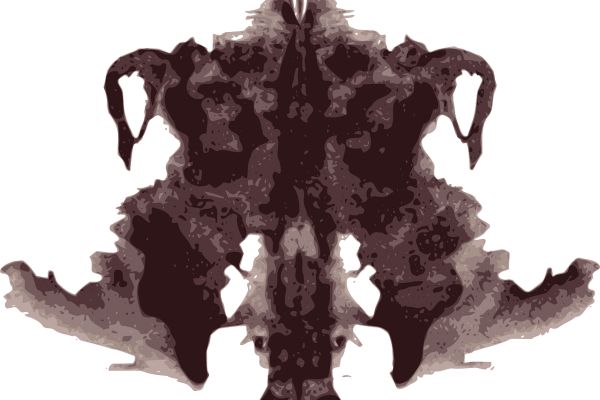
Rorschach Test
The Rorschach test is a psychological test designed by psychiatrist Hermann Rorschach in the early 1900s. The test involves presenting a subject with images of inkblots; the person then describes what they see in these blots. The test can purportedly assess personality, emotional functioning, or certain mental disorders, but research has significantly challenged its validity.

Humans have long explored the idea of interpreting ambiguous designs. Swiss psychoanalyst Hermann Rorschach formalized this idea through the inkblot test he created—he noticed that people with schizophrenia tended to perceive the images differently than did other individuals. He therefore used inkblots to create a diagnostic test for schizophrenia, which he wrote in his book Psychodiagnostik. He died soon after the book was published, but others extended his work and broadened the inkblot test.
The Rorschach test is conducted by a practitioner who sits next to a subject and presents them with 10 images of symmetrical inkblots, one at a time. The practitioner asks the subject to describe what they see in the blot, such as animals or people. This process may occur repeatedly, to explore whether the subject perceives anything new the next time around.
The subject’s responses are then recorded and interpreted according to standardized scoring systems. For example, scoring criteria may include how common the response is, what part of the blot the subject focuses on, or if the person sees movement in the image. The interpretation was originally designed to diagnose schizophrenia but today may aim to elicit insights about the subject’s personality, emotions, cognition, motivations, relationships, or mental health.
Herman Rorschach originally developed the inkblot test to assess patients for schizophrenia, because he observed that people with schizophrenia tended to interpret the images differently than others. In one inkblot, for example, most people saw a moth or bat. People with schizophrenia, on the other hand, saw people moving, or they weren’t able to say what they saw in the inkblot.
Rorschach tests were historically popular and widespread, administered in court cases, especially custody battles and parole hearings, job applications, military assessments, and psychiatric institutions. Although criticism of the test has curbed its use today, the test is often still used in these contexts.

In response to criticism that the test is not a reliable assessment tool, psychologists have worked to improve and validate the Rorschach over time. They have developed standardized protocols to administer, score, and interpret the test.
Yet the test has still been critiqued on many fronts. Although there may be typical responses and idiosyncratic responses to the same blots, research suggests the Rorschach is not a valid instrument to test personality traits, predict behavior, or diagnose some disorders. The test seems to over-pathologize test-takers, finding higher rates of schizophrenia, depression, and narcissism than are typically found in the general population. And despite efforts to standardize the test, there may still be differences in scoring and interpretation, rendering the results less reliable than other measures.
However, proponents of the test argue that it is a valuable tool to elicit aspects of a person's identity. The open-ended nature of the test—simply telling the practitioner what the person sees—may reveal aspects of the subconscious that may not have been accessible otherwise.
Despite the critiques of the Rorschach, the test has some benefits. Outside of the context of being a diagnostic tool, it may be helpful for clinicians to begin to paint a picture of who their patient is. For people who don’t have the ability to articulate their emotions or inner experiences, the Rorschach provides an accessible entry point. Patients do not have to begin telling their stories on their own, describe their experiences, or worry about any “wrong” answers. Stating what they see provides an opening to discuss their identity and experiences.
While research has challenged the reliability of the Rorschach test, some point out the systematic differences that appear among those with psychosis and believe that the test can help detect early perceptual disturbances that indicate the onset of psychosis. The tool could then be helpful for identifying people at risk of developing schizophrenia or another psychotic disorder.






